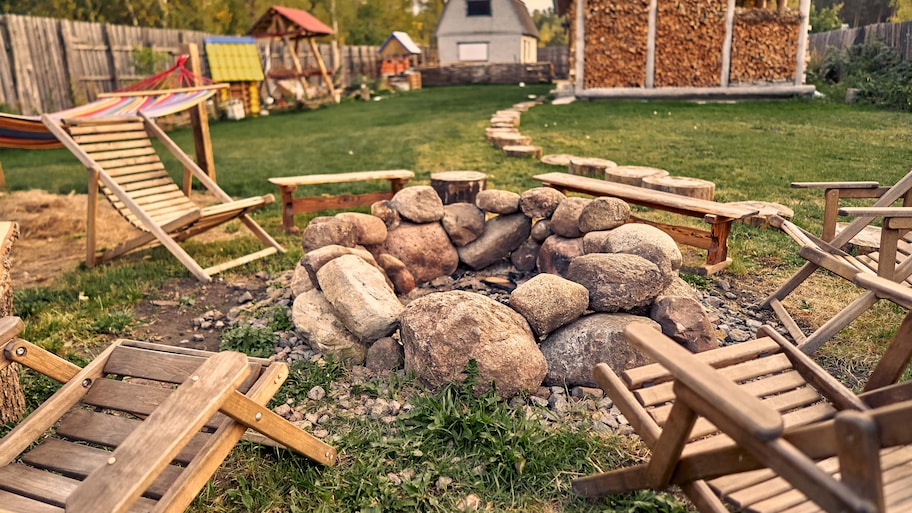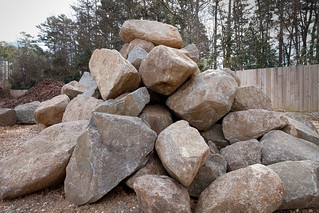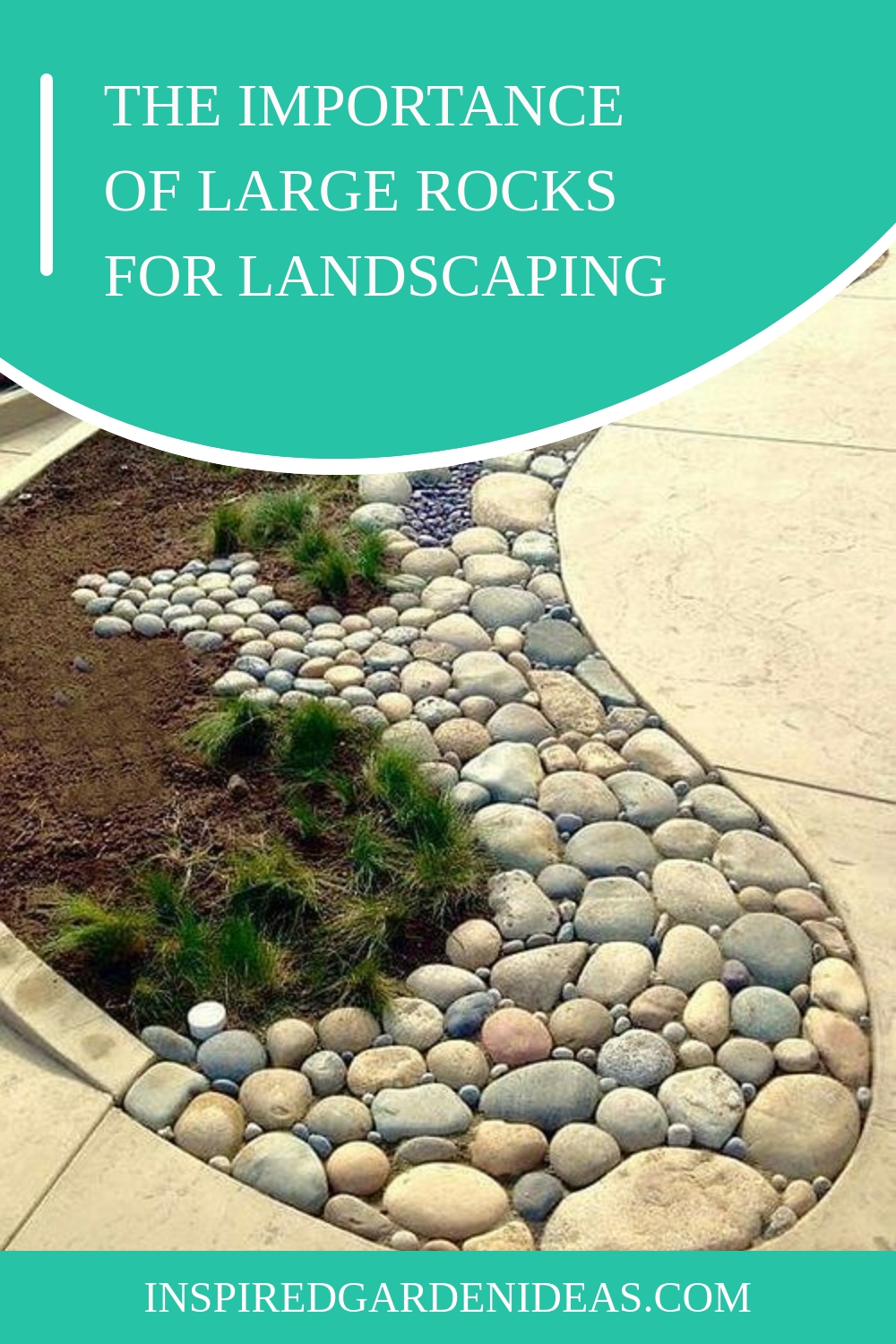Landscaping is an essential aspect of creating a beautiful and functional outdoor space. It involves the design, planning, and implementation of various elements such as plants, trees, hardscapes, and rocks. While the importance of plants and trees cannot be overstated, large rocks play a significant role in creating a visually appealing and durable landscape. In this article, we will explore the various ways in which large rocks can enhance your landscaping and provide tips on how to incorporate them into your design.
Why Choose Large Rocks for Your Landscape Design?

Large rocks, also known as boulders, are natural elements that have been used in landscaping for centuries. They are available in different shapes, sizes, and colors, making them versatile and suitable for various landscape styles. Here are five reasons why incorporating large rocks into your landscaping is a great idea:
1. Adds Visual Interest and Texture
One of the main reasons to use large rocks in your landscape design is that they add visual interest and texture to the overall look. Unlike plants, which may bloom only during certain seasons, rocks remain constant throughout the year. This means that your landscape will always have an attractive element even during the winter months when most plants are dormant. Additionally, the rough and irregular surfaces of large rocks create a contrast with other soft elements in your landscape, adding dimension and depth to the design.
2. Provides Natural Hardscaping
Hardscaping refers to the non-living elements in a landscape, such as patios, walkways, and retaining walls. Large rocks make excellent natural hardscaping materials due to their durability and strength. They can withstand harsh weather conditions and heavy foot traffic, making them a practical choice for creating pathways or retaining slopes. Furthermore, using large rocks as hardscaping eliminates the need for regular maintenance and repairs, saving you time and money in the long run.
3. Acts as a Focal Point
In landscape design, a focal point is an element that draws attention and creates a sense of balance and harmony. Large rocks make perfect focal points due to their size and unique features. Placing a boulder strategically in your yard can create a visual anchor, leading the eye towards it and creating a harmonious flow throughout the space. You can also use large rocks to highlight specific areas in your landscape, such as a garden bed or water feature.
4. Helps with Erosion Control
If you have a sloped yard, erosion can be a significant issue that affects the stability and appearance of your landscape. Large rocks can serve as natural barriers that prevent soil from washing away during heavy rains. They also help to slow down the flow of water, allowing it to seep into the ground and replenish the soil. By incorporating large rocks into your landscaping, you can effectively control erosion and maintain the integrity of your outdoor space.
5. Creates a Natural Look
Large rocks are a crucial element in creating a natural and organic look in your landscape. They are a part of nature and can seamlessly blend in with other elements such as plants, trees, and water features. Unlike artificial hardscaping materials, which can make a landscape look manufactured, large rocks add a touch of authenticity and character to the design. They can also be used to mimic natural formations such as mountains, adding to the overall aesthetic appeal of your landscape.
How to Incorporate Large Rocks into Your Landscape Design

Now that we’ve established the importance of large rocks in landscaping, let’s discuss how you can incorporate them into your design. Here are some tips to get you started:
1. Choose the Right Size and Shape
When selecting large rocks for your landscape, consider your overall design and the space available in your yard. You don’t want to choose rocks that are too big and overpowering or too small and insignificant. Also, consider the shape of the rocks and how they will fit into your design. For example, round boulders can create a soft and natural look, while angular ones can add an element of texture and contrast.
2. Create Groupings
Instead of placing large rocks randomly throughout your landscape, consider creating groupings of two or three rocks. This helps to create a more natural and cohesive look, as you would find in nature. Groupings can also help to guide the flow of movement in your landscape and create a sense of balance.
3. Use Them as Steps or Seating
In addition to hardscaping and focal points, large rocks can also serve as functional elements in your landscape. If you have a slope, you can use large rocks as steps to create a pathway or stairs. They can also double as seating areas when placed strategically around a fire pit or outdoor living space.
4. Mix with Other Materials
Large rocks can complement various other materials in your landscape, such as gravel, mulch, or plants. You can use them to create a border for a garden bed, or to line a walkway. The key is to experiment and find the right combination that works for your design.
5. Seek Professional Help
While incorporating large rocks into your landscape may seem easy, it’s best to seek professional help to ensure proper placement and installation. A landscaping expert can help you select the right type and size of rocks, as well as provide proper equipment and techniques for safe and secure installation.
Frequently Asked Questions about Large Rocks in Landscaping

Q: How do I know which rocks are suitable for my landscape?
A: When choosing large rocks for your landscape, consider factors such as size, shape, color, and texture. You can also consult with a landscaping professional to help you make the best decision for your specific design.
Q: How do I move and install large rocks?
A: Moving and installing large rocks can be a physically demanding task. It’s best to seek professional help or use specialized equipment such as cranes and skid steers for safe and efficient installation.
Q: Can I use large rocks in a small yard?
A: Yes, you can incorporate large rocks into any size yard. However, it’s important to choose the right size and shape of rocks that will complement your yard’s proportions.
Q: Do large rocks attract pests?
A: Large rocks do not attract pests on their own. However, if they are placed too close to your house or other structures, they may provide shelter for pests. Make sure to place rocks at least 6 inches away from buildings and regularly inspect them for signs of pest infestation.
Q: Are there any safety concerns with using large rocks in landscaping?
A: Safety should always be a top priority when using large rocks in landscaping. Make sure to properly secure and stabilize rocks to prevent accidents, and avoid placing them in high-traffic areas where they can pose a tripping hazard.
Conclusion

Incorporating large rocks into your landscaping can add beauty, functionality, and longevity to your outdoor space. They are versatile, durable, and can enhance any landscape style. By following the tips and guidelines in this article, you can create a stunning and natural-looking landscape that will last for years to come. Don’t be afraid to experiment and have fun with different sizes, shapes, and placements of large rocks to find the perfect combination for your design. With proper planning and professional help, your landscape can become a beautiful and functional oasis for you to enjoy.


